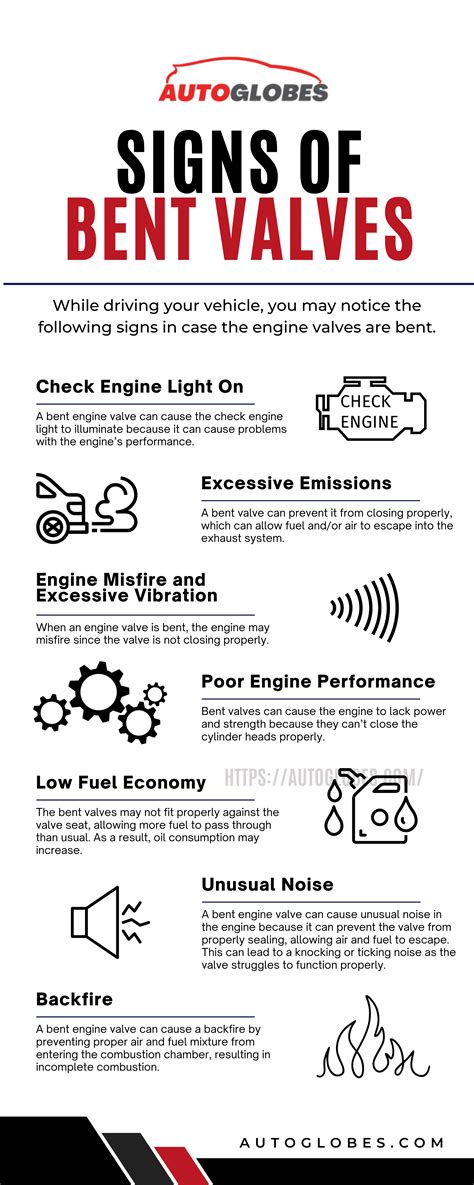How To Tell If A Valve Is Bent
Ronan Farrow
Mar 26, 2025 · 3 min read

Table of Contents
How to Tell if a Valve is Bent: A Comprehensive Guide
Bent valves are a serious issue in internal combustion engines, leading to decreased performance, reduced fuel efficiency, and even catastrophic engine failure. Knowing how to identify a bent valve is crucial for any car owner or mechanic. This guide will walk you through the signs, causes, and what to do if you suspect a bent valve.
Visual Inspection: The First Step
While not always conclusive, a visual inspection can sometimes reveal a bent valve. This requires removing the cylinder head, a task best left to experienced mechanics. However, if you're comfortable working on your engine, here's what to look for:
What to Look For:
- Obvious bends: The most straightforward sign is a noticeable bend in the valve stem. Look for any curvature or deviation from its straight, vertical alignment.
- Valve seating issues: Bent valves often fail to seat properly against the valve seat. This can be observed as a gap or uneven contact between the valve and the seat.
- Damage to the valve face: Bending can cause damage to the valve's contact surface. Look for scoring, pitting, or deformation.
- Valve stem wear: Excessive wear on the valve stem, particularly near the head, can indicate a pre-existing problem that might have contributed to bending.
Important Note: Visual inspection is limited. Minor bends might be difficult to detect without specialized tools.
Indirect Signs of a Bent Valve
Sometimes, a bent valve doesn't reveal itself through visual inspection. Instead, its presence is signaled through the engine's performance and behavior. These indirect signs are often more reliable indicators:
Performance Issues:
- Loss of power and compression: This is often the first and most noticeable symptom. A bent valve will significantly reduce the engine's ability to compress the air-fuel mixture, resulting in a noticeable loss of power.
- Rough idling and misfiring: The engine may idle roughly or misfire, especially at certain RPMs. This is due to the inconsistent combustion caused by the leaking valve.
- Exhaust smoke: Unusual smoke from the exhaust, particularly blue smoke (indicating burning oil), can point towards a damaged valve.
- Decreased fuel efficiency: A bent valve can lead to a drop in fuel economy due to the incomplete combustion.
- Unusual engine noises: Listen for unusual clicking, tapping, or ticking sounds that might indicate the valve striking the piston. This is a serious sign and requires immediate attention.
Diagnostic Tests: Confirming Your Suspicions
While visual inspection and performance issues provide clues, definitive diagnosis requires further investigation. Specialized tools and techniques are needed, typically performed by a qualified mechanic:
Compression Test:
A compression test measures the pressure within each cylinder. Low compression in a specific cylinder strongly suggests a problem with that cylinder's valves.
Leak Down Test:
This test introduces compressed air into the cylinder and measures how much air leaks out. Leaks indicating valve problems are usually accompanied by escaping air from the exhaust or intake.
What to Do if You Suspect a Bent Valve
If you suspect a bent valve, do not attempt to drive your vehicle. Continuing to operate the engine with a bent valve can cause significant damage to other components, potentially leading to catastrophic engine failure. It is crucial to take your vehicle to a qualified mechanic for proper diagnosis and repair.
Preventing Bent Valves
While sometimes unavoidable (e.g., due to foreign object impact), there are steps you can take to minimize the risk:
- Regular engine maintenance: Keep your engine in good condition through regular oil changes, tune-ups, and inspections.
- High-quality parts: Use high-quality engine parts to ensure reliability and durability.
- Careful driving: Avoid driving conditions that could lead to excessive stress on the engine, such as over-revving or hitting severe potholes.
Addressing a bent valve promptly is essential to prevent further damage and maintain your engine's health. By understanding the signs and seeking professional help, you can keep your vehicle running smoothly.
Featured Posts
Also read the following articles
| Article Title | Date |
|---|---|
| How To Restore An Old Baseball Glove | Mar 26, 2025 |
| If Bail Is 10 000 How Much Do I Pay | Mar 26, 2025 |
| How To Use Doe Bleat Can | Mar 26, 2025 |
| How To Train For 400 Meter Dash | Mar 26, 2025 |
| How To Secure A Bike In A Truck Bed | Mar 26, 2025 |
Latest Posts
Thank you for visiting our website which covers about How To Tell If A Valve Is Bent . We hope the information provided has been useful to you. Feel free to contact us if you have any questions or need further assistance. See you next time and don't miss to bookmark.
